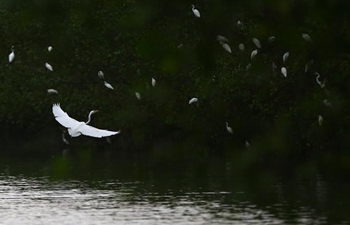BEIJING, March 4 (Xinhua) -- Chinese scientists have developed a new material that can use light to efficiently and safely purify water.
Photocatalytic methods offer environmentally safe water purification, but the catalysts required in the process are usually metal-based, which can cause second pollution.
Scientists from the Institute of Process engineering under the Chinese Academy of Sciences and Yangzhou University have designed an efficient metal-free catalyst for photocatalytic water purification.
They utilize nanosheets of graphitic carbon nitride, an ultra-thin two-dimensional material with the right electronic properties to absorb the light and generate reactive oxygen. Its structure helped to facilitate the reaction by generating plenty of hydrogen peroxide, which efficiently kills bacteria.
Results showed that with this catalyst, pathogen-rich water can be rapidly purified in 30 minutes with a disinfection efficiency of over 99 percent under visible-light irradiation. It can also avoid secondary pollution or heavy metal ion residues.
The research team intends to improve the material before it is ready for commercial use. They plan to expand the material's ability to absorb photons, develop antibacterial fibers and refine the nanosheet preparation process.
The research was published in the journal Chem.

















